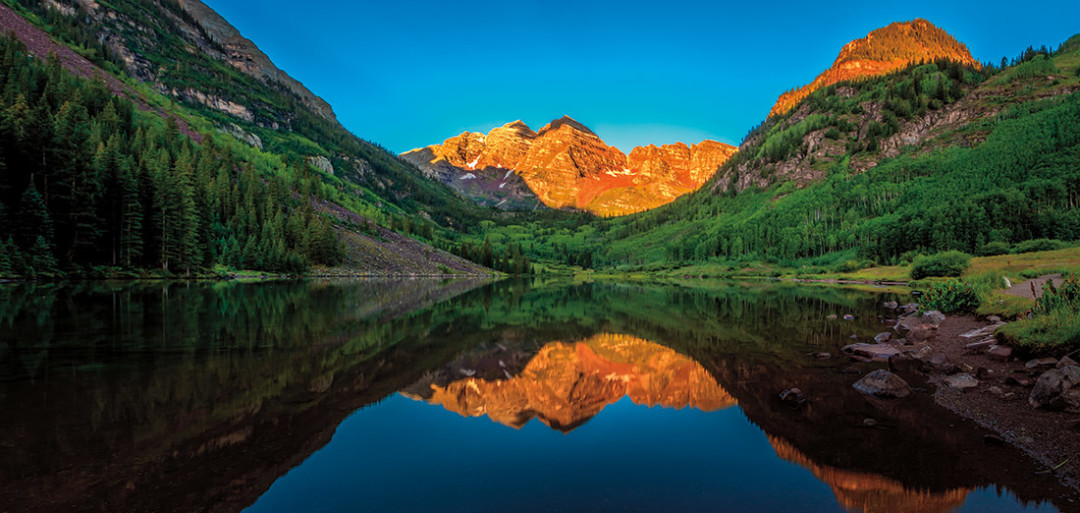Call of the Wild

Image: Tim Mutrie
The world’s first experiment with wilderness—the legal kind, that is, often spelled with a capital “W”—started with nine million acres of federal land across fifty-four pristine areas in thirteen states. On Sept. 3, 1964, President Lyndon B. Johnson signed into law the Wilderness Act, stipulating that places like the Maroon Bells-Snowmass Wilderness, located south and west of town, would be protected in perpetuity. Undeniably, there was a bit of poetry to it all:
A wilderness, in contrast with those areas where man and his own works dominate the landscape, is hereby recognized as an area where the earth and its community of life are untrammeled by man, where man himself is a visitor who does not remain.
Today, the National Wilderness Protection System encompasses more than 109 million acres, including the Hunter-Fryingpan Wilderness and the Collegiate Peaks Wilderness, the two other Wildernesses directly adjacent to Aspen. But as one of the original fifty-four areas protected by the act, the Maroon Bells will be the fitting site of a local celebration to mark Wilderness’s fiftieth anniversary this summer. Two local environmental organizations, Carbondale-based Wilderness Workshop (wildernessworkshop.org) and Aspen Center for Environmental Studies (aspennature.org), are partnering with the White River National Forest (fs.usda.gov/whiteriver) to host an all-day affair on Saturday, Aug. 2.
At press tme, plans called for a variety of guided hikes at the Bells in the morning, followed by a party with live music and family activities from 3 to 9 p.m. at the base of Aspen Highlands. Noted Wilderness author Rick Bass is scheduled to make a keynote address. (See a calendar of additional anniversary events this summer at maroonbells50.org.)
The fiftieth anniversary has also proved to be a time for reflection, both locally and beyond.
“The Wilderness Act was sort of the first time that we as a human society legislated self-restraint toward nature,” says Sloan Shoemaker, the executive director of Wilderness Workshop. “That’s what it’s all about—allowing creation to continue on its own trajectory.”
Politically speaking, the idea of legal Wilderness enjoyed tremendous support from Aspen residents from the early 1960s into the ’80s, as more local acres were folded into the system. But, according to Connie Harvey, a tireless Wilderness advocate and one of the founders of Wilderness Workshop, some of that local support has waned.
“I think we’ve lost some of it, frankly, particularly with mountain bikers who’ve decided they ought to be able to be in Wilderness,” says Harvey. “There are different opinions about it nowadays, but I just always felt like lands weren’t safe—from the motorheads, the dam builders, and so on—until we got that legal Wilderness designation. Now, that doesn’t mean humans are excluded, but, yes, they are limited.”
As for a favorite spot in the Wilderness, Harvey isn’t particular at all. “Oh,” she says, laughing, “that’s pretty much wherever I happen to be.”













































